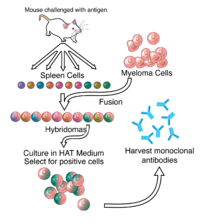
Photo from wikipedia
Under the global pandemic of COVID-19, public health facilities, such as hospitals, are required to readjust, design, and plan a safe movement flow of people to meet the social distance… Click to show full abstract
Under the global pandemic of COVID-19, public health facilities, such as hospitals, are required to readjust, design, and plan a safe movement flow of people to meet the social distance rules and quarantine COVID-19 and the non-COVID-19 patients to prevent cross-infection. However, readjustments to separate patients have significantly reduced the maximum throughput of public health facilities, worsening already scarce public health resources. Therefore, this paper proposes throughput maximization algorithms based on the one-way street problem which meets the requirements of social distance rules. First, the floor plan of a hospital is transformed into a graph, each node is traversed by breadth-first search. Then, this paper considers patients' node pair sets as different set unions, the direction of edges, and the color of links based on DFS-XOR algorithm are designed to distinguish the paths of COVID-19 and non-COVID-19 patients. Finally, this paper utilizes minimum shared link algorithms to determine the minimized sharing links between paths linking different set unions and components. The throughput is maximized by reducing the number of shared links and alternating links. The results indicate that compared with the brute force algorithms, the algorithms proposed in this paper significantly improve the maximum throughput.
Journal Title: Computational and Mathematical Methods in Medicine
Year Published: 2022
Link to full text (if available)
Share on Social Media: Sign Up to like & get
recommendations!